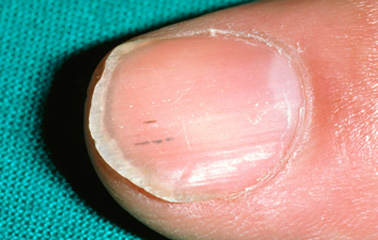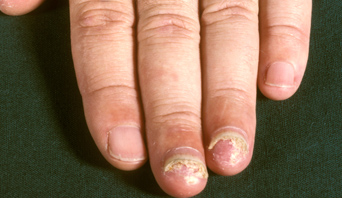Reactive arthritis, formerly known as Reiter’s syndrome, is a condition that causes inflammation (redness and swelling) in various places in the body.
It usually develops following an infection, and in most cases clears up in a few months without causing long-term problems.
The three most common places affected by reactive arthritis are:
the joints (arthritis), which can cause pain, stiffness and swelling
the eyes (conjunctivitis), which can cause eye pain and redness
the urethra (non-gonococcal urethritis), which can cause pain when urinating (the urethra is the tube that carries urine out of the body)
However, most people will not experience all of these problems.
Read more about the symptoms of reactive arthritis.
What causes reactive arthritis?
Reactive arthritis usually develops within four weeks of an infection, typically after a sexually transmitted infection (STI) such as chlamydia, or an infection of the bowel.
For reasons that are still unclear, the immune system (the body’s defence against infection) appears to malfunction in response to the infection and starts attacking healthy tissue, causing it to become inflamed.
Read more about the causes of reactive arthritis.
Seeking medical advice
See your GP if you have swollen and painful joints, especially if you have recently had symptoms of an infection such as diarrhoea or pain when passing urine.
There is no single test for reactive arthritis, although blood and urine tests, genital swabs and X-rays may be used to check for infection and rule out other causes of your symptoms.
Your GP will also want to know about your recent medical history, such as whether you may have recently had a bowel infection or an STI.
How reactive arthritis is treated
There is currently no cure for reactive arthritis, but most people get better in around six months. Meanwhile, treatment can help to relieve symptoms such as pain and stiffness.
Symptoms can often be controlled using non-steroidal anti-inflammatory drugs (NSAIDs) and painkillers such as ibuprofen.
Severe symptoms may require more powerful steroid medication (corticosteroids) or disease-modifying anti-rheumatic drugs (DMARDs).
Read more about treating reactive arthritis.
Who is affected
Reactive arthritis can occur at any age, but it most commonly affects young adults aged 20-40.
Men are generally affected more than woman – particularly in cases linked to STIs, which are estimated to be about 10 times more common in men.
People who have a certain gene called HLA-B27, which is found in around one in every 10 people in the UK, are about thought to be around 50 times more likely to develop reactive arthritis than those who don’t have this gene.
Preventing reactive arthritis
The most effective way to reduce your risk of reactive arthritis is to avoid the STIs and bowel infections that most commonly cause the condition.
The most effective way of preventing STIs is to always use a barrier method of contraception, such as a condom, during sex with a new partner.
Read advice on STIs, contraception and sexual health.
Ensuring good standards of hygiene when preparing and storing food can help to prevent gastrointestinal infections. Read about food safety and preventing food poisoning.

